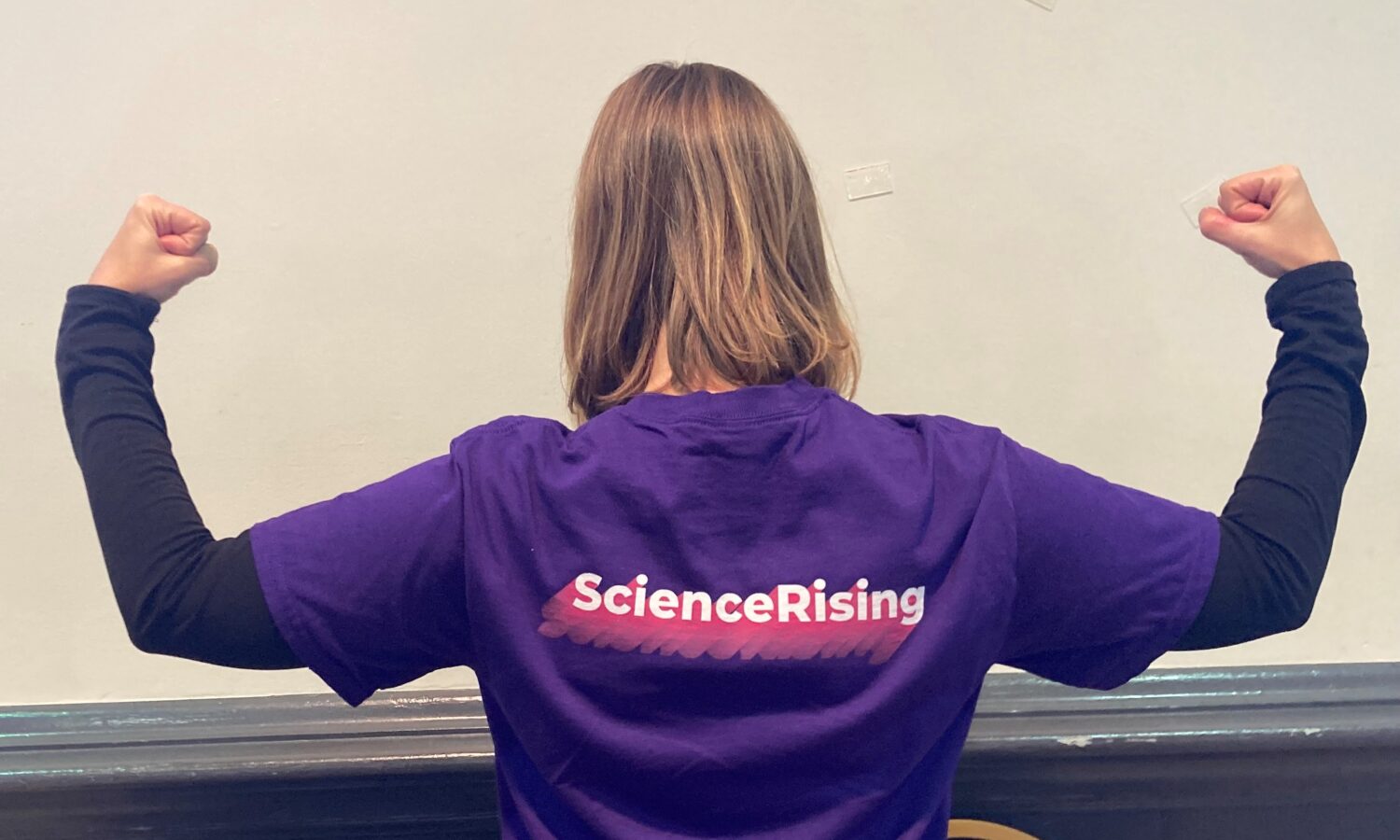In 2024 students are determined to show up to vote, make their voices heard, and overcome any systemic, institutional, and individual challenges that stand in their way. That’s my biggest takeaway from attending the inspiring Students Learn, Students Vote Summit at the University of Maryland last month.
The two-day gathering brought together nearly 240 students, faculty, and nonprofit partners from dozens of groups, campuses, and 25 different states who collectively focus on one thing: Turning out the student vote and engaging students in our democracy. It was energizing to learn and connect with student voting advocates in-person, and to raise awareness about Science Rising and our work to mobilize the STEM student vote in 2024.
As we gear up for another big election year, here are four other key takeaways we’ll be applying to our voter engagement work in 2024:
Issues drive voter turnout
While it can be challenging at times to talk about issues in a nonpartisan way, just naming issues that are ‘on the ballot’ and may be relevant and of interest to your audiences can be a powerful way to inspire action and voting. Calls to action that promote the values of civic duty and participating in our democracy on their own are often insufficient motivators. For more guidance, check out the Students Learn, Students Vote Nonpartisan Messaging Guide.
Focusing on local and state elections and issues also provides a pathway to engaging and turning out potential voters. Even though federal elections and national and global issues often get the bulk of attention, local and state elections are where important decisions are made that affect our daily lives.
Voter ID challenges can be overcome
One of the biggest obstacles to student voting – and a primary tactic of those seeking to suppress the student vote – is the confusing and ever-changing rules around acceptable voting IDs, which vary state by state and can be confusing and hard for students to follow.
To help counter this, I was excited to learn about VoteRiders, a nonpartisan nonprofit that provides voter ID information and assistance for all 50 states, has developed a robust slate of materials and resources to support students, campuses, and all individuals to get the ID they need to vote. Among other things, they’ll mail out, free of charge, postcards for distribution that detail the specific voting ID requirements for any specific state.
Understanding a campus’s unique culture is essential to engaging students effectively
This is especially important at Historically Black Colleges and Universities (HBCUs) and other minority serving institutions, where campus organizers are tired of outside groups coming in as if they have all the answers before they get to know the campus.
Many HBCUs have a very strong culture of civic engagement and service on their campus, and it’s critical to approach campus leaders by listening first, and taking the time to understand the opportunities and challenges they face. Campus Vote Project compiled the HBCU Legacy Insights Brief to outline some of these takeaways.
Organizers working to engage students face two major challenges
The first is a common sentiment of apathy, cynicism, and hopelessness among students. Some feel that their vote doesn’t make a difference, our democracy isn’t really able to address the challenges and concerns they have, and thus they don’t feel like it’s worth it to vote.
To help mitigate this, it’s crucial to constantly highlight and point to examples of success, both present and past, where voting, organizing, civic engagement, and participation in our democracy has advanced progress and change.
The second major challenge is ‘breaking through the noise’ of all the incoming information, demands, deadlines, and competing priorities that students deal with.
This is why it’s critical to think about the right messenger to reach your audience—and part of the reason we’ve been training students to reach other students. A trusted messenger is critical not only to understanding the process of registering to vote and getting out to vote, but also in getting people to pay attention to the idea of voting in the first place.

Attention STEM students: Our democracy needs you to get out and vote!
Most people we spoke with were excited about Science Rising’s specific focus on STEM students, which no other group or effort specifically targets. Many people also were aware of – or had first-hand experience with – the fact that STEM majors vote at lower rates than students in nearly all other majors. Engineers in particular were repeatedly singled out as one of the most challenging groups to engage.
We know that faculty can play a key role in finding creative ways to integrate civic engagement into the classroom. Shout-out to Miami-Dade College, which has developed a Civic Action Scorecard that allows students to earn credit for doing any number of 29 (!) different civic engagement activities.
If you want to help us set a new record for STEM student voter turnout in 2024, join us! Sign up for the next Science Rising trainin; check out our resources on voter registration and mobilization, countering disinformation, and integrating civic engagement in the classroom; and start reminding your friends to check their registration ahead of the next election!


